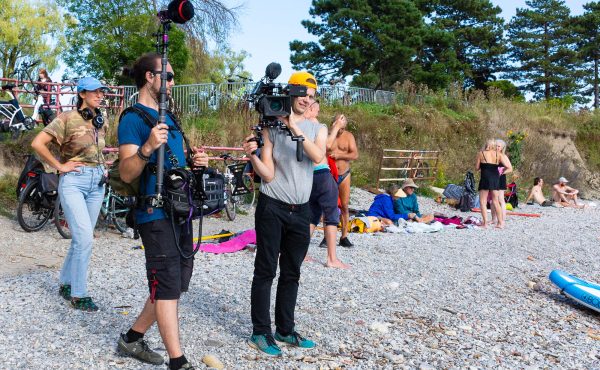
Every Tuesday, Todd Irvine of LEAF posts a stop from the Toronto Tree Tours, a collaborative project of LEAF and the Toronto Public Space Committee. The Toronto Tree Tours offers walking tours in neighbourhoods across the city as well as virtual tours on its web site. The aim is to introduce Torontonians to the individual trees in their neighbourhood while telling stories of our city’s ecological and cultural history.
_____________________________
St. Lawerence tree tour: Stop 11
Walk into this back alley, which is parallel to a rail line, and you’ll see a sight common to most railroad corridors and alleyways in the city: an abundance of tree-of-heaven (Ailanthus altissima), Manitoba maple (Acer negundo), and Norway maple (Acer platanoides) trees growing along the edges of the fence. The tree-of-heaven has a tropical appearance with smooth grey bark. It is often mistaken for the native staghorn sumac (Rhus typhina) because of its similar pinnate leaves, compound leaves made up of leaflets arranged on either side of the leaf’s stem. As a general rule, if you see a tree in the city and think it is a sumac, chances are that it is a tree-of-heaven because these trees are better able to adapt to harsh urban conditions. The tree-of-heaven has a more upright form with a single trunk, while the sumac has lower spreading canopies and often crooked trunks that fork into multiple stems.
The Norway maple has large dark green leaves and a thick canopy. Manitoba maples are often mistaken for ash trees due to their compound leaves that are not typical of other maple species. Manitoba maples can also be identified by their often sprawling asymmetrical canopies with crooked limbs that branch irregularly as they search for light.
The tree-of-heaven and Manitoba maple are often considered weed trees because they have several undesirable characteristics, including weak wood, a short lifespan, and the ability to grow almost anywhere in large numbers. These trees were wind-seeded, meaning they were blown to where they now stand by the wind. Despite these drawbacks the trees contribute significantly to this alley by acting as a buffer between the rail lines and residences, shading the buildings, and providing habitat for animals, birds, and insects.
Read more stories from the St. Lawrence tree tour . . .
Photograph by Luke Tyszkiewicz – www.stillsinflux.com



